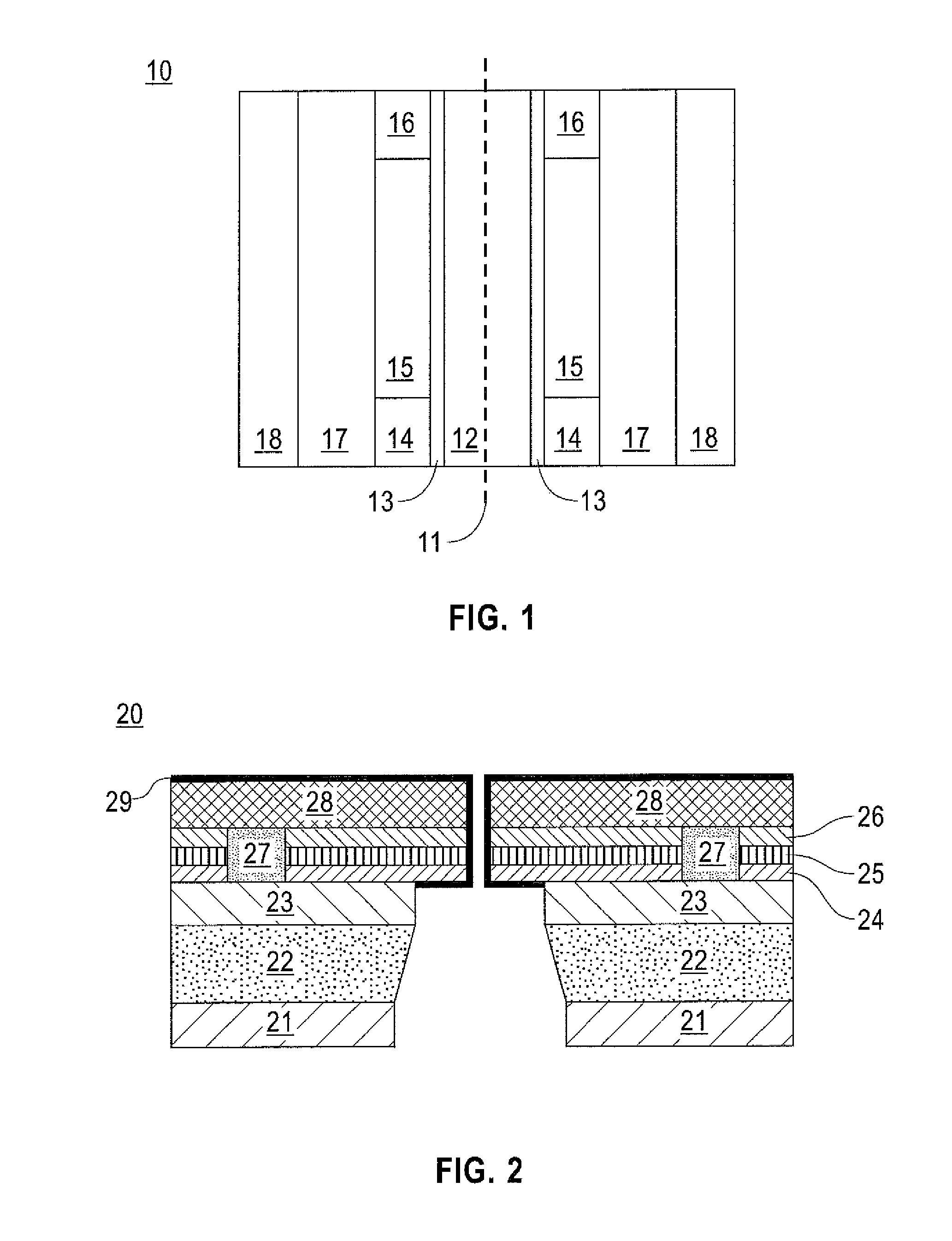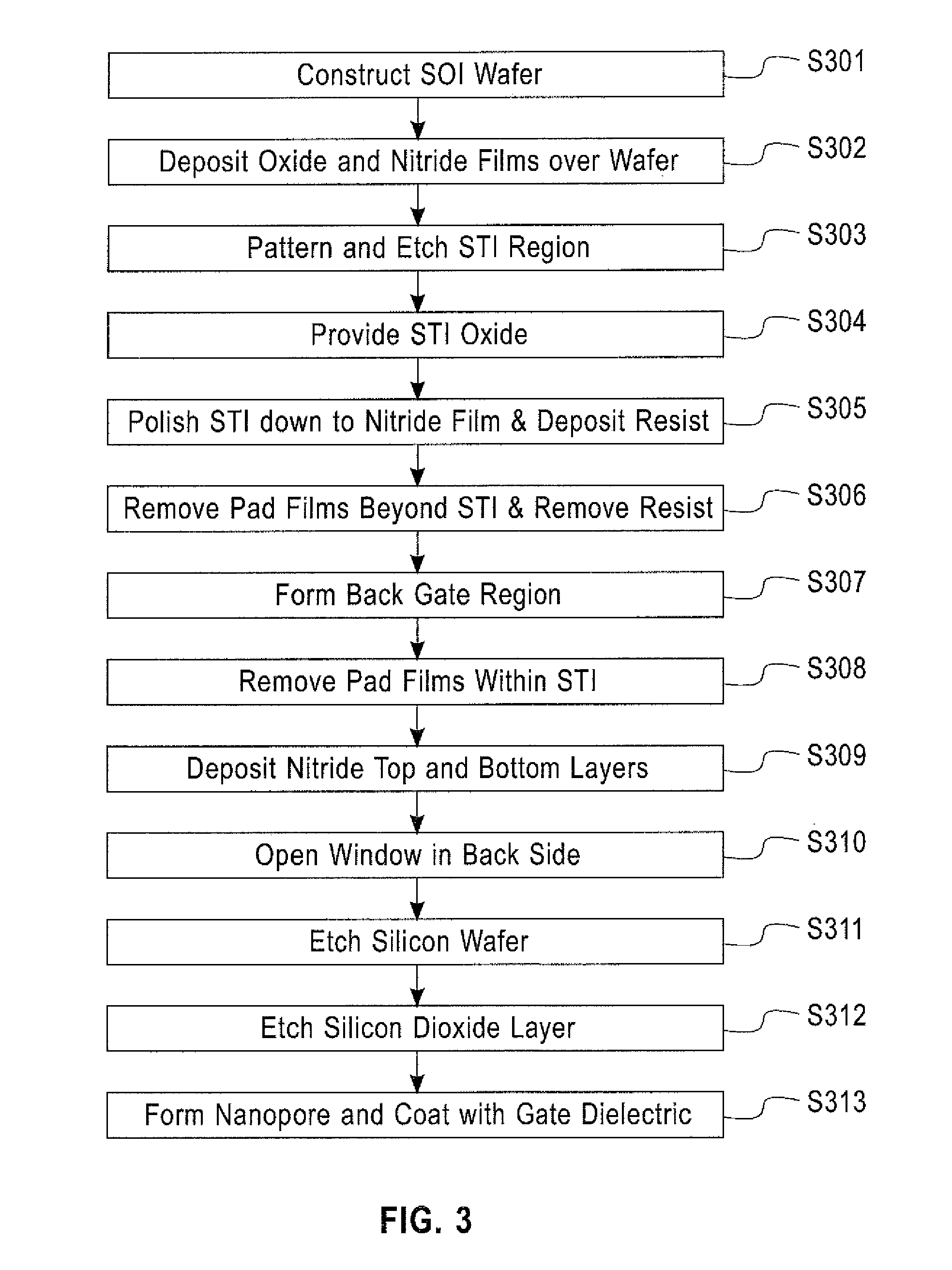Thin body FET nanopore sensor for sensing and screening biomolecules
a nanopore sensor and nanopore technology, applied in the field of fet sensors, can solve the problems of complex sensor manufacturing, low sensor quality, and inability to test biomolecules for which no binding coating may be readily available, and achieve the effects of improving the detection accuracy, reducing the cost of biological coatings, and improving the detection accuracy
- Summary
- Abstract
- Description
- Claims
- Application Information
AI Technical Summary
Benefits of technology
Problems solved by technology
Method used
Image
Examples
Embodiment Construction
[0033]In describing exemplary embodiments of the present disclosure illustrated in the drawings, specific terminology is employed for sake of clarity. However, the present disclosure is not intended to be limited to the specific terminology so selected, and it is to be understood that each specific element includes all technical equivalents which operate in a similar manner.
[0034]Exemplary embodiments of the present invention provide a field effect transistor (FET) sensing device for sensing biomolecules and methods for fabricating and using the same. FET sensing devices make use of the fact that biomolecules tend to exhibit charge characteristics such as ionic charge or non-uniform distribution of charge that give rise to dipole moments. Thus, the proximity of biomolecules to the FET can influence the channel potential of the FET and thereby shift the threshold voltage Vt or FET drain current. For example, large drain current change in the presence of charged species may be observe...
PUM
 Login to View More
Login to View More Abstract
Description
Claims
Application Information
 Login to View More
Login to View More - R&D
- Intellectual Property
- Life Sciences
- Materials
- Tech Scout
- Unparalleled Data Quality
- Higher Quality Content
- 60% Fewer Hallucinations
Browse by: Latest US Patents, China's latest patents, Technical Efficacy Thesaurus, Application Domain, Technology Topic, Popular Technical Reports.
© 2025 PatSnap. All rights reserved.Legal|Privacy policy|Modern Slavery Act Transparency Statement|Sitemap|About US| Contact US: help@patsnap.com



